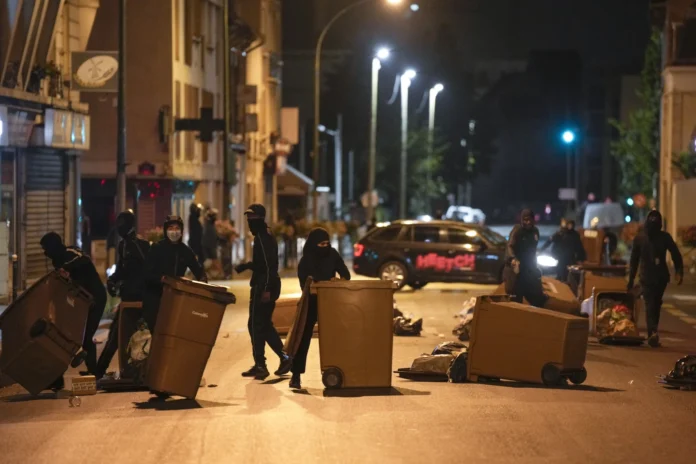PARIS (AFP) – The latest wave of riots in France, following the shooting of a teenage boy by police on the outskirts of Paris, has taken unexpected turns across the country. Even small towns and villages that normally escape such devastation face violence, fires and vandalism. The occurrence of such incidents in rural areas raises questions about the influence of social media in exacerbating social problems and promoting mock violence. This unprecedented development distinguishes the recent nationwide riots from previous waves of violence and leaves local governments perplexed.
In the picturesque French town of Quissac in the Gardes region of southern France, a civil war erupts in disturbing events. Peace in the town of 3,300 was shattered when a small group bombed the barracks of the local gendarmerie, destroying a metal store with powerful firecrackers and setting fire to a cypress tree. Although the scale of the incident was relatively small compared to large-scale demolitions in large cities, it was the first time in Quisac’s history that such a riot occurred.
The violence that began with police shootings quickly spread across the United States with alarming speed and intensity. Unlike previous riots, which were largely confined to working-class towns and slum housing schemes, this wave of riots spread beyond urban centers, devastating cities where no such incidents had hitherto occurred. also reached I was also impressed. The proliferation of social networks has played an important role in bridging the divide between urban and rural areas and in spreading and glorifying acts of violence. As a result, smaller communities faced the same problems as larger communities.
Why did the riot occur? While the media has traditionally focused on events in big cities such as Paris, Lyon and Marseille, smaller cities seem to be unaffected. However, recent events have shattered that perception, with incidents being reported in several smaller communities. Officials, including French President Emmanuel Macron, suspect videos of the riots circulating on social media platforms are fueling copycat violence and fostering an atmosphere of dominance among those involved.
The Associated Press analysis identified a total of 297 cities, towns and villages where authorities reported unrest. This unexpected outbreak of violence has affected communities across the country, from the dormitory town of Ascher west of Paris to Utz near the eastern border of Germany and Luxembourg. Rural areas such as Rugles in Normandy and Port-Saint-Louis-du-Rhône in the south were also affected, with arson, vandalism and vandalism occurring in unexpected places. Even in cities known for low unemployment, such as Colmar in Alsace, disruption was limited, highlighting the far-reaching impact of these nationwide events.
A recent spate of urban riots in France has cast doubt on the notion that such incidents are confined to large cities and poor neighborhoods. Social media plays a key role in fanning and amplifying fear, and the spate of unprecedented violence in small towns and villages suggests a shift in the dynamics of social issues. Local governments need to examine the causes of this unexpected wave of violence and question the implications of geographic isolation in the 21st century. Incidents in Quisac and other rural areas highlight the need for a thorough investigation into the root causes of these fears and the necessary responses.
The social media-induced unrest quickly spread across the country, betraying the notion that these incidents were confined to urban areas and marginalized housing projects. The article highlights that the proliferation of videos depicting violence on social media has fueled copycat behavior, making the situation problematic.
The recent wave of urban unrest in France has challenged the notion that such incidents are confined to major cities and disadvantaged areas. The unprecedented spread of violence to small towns and villages signifies a shift in the dynamics of societal issues, as social media plays a significant role in amplifying and encouraging unrest.
Local officials are left pondering the reasons behind this unexpected wave of violence, questioning the insulating force of geography in the 21st century. The incidents in Quissac and other rural communities highlight the need for a comprehensive examination of the underlying factors driving such unrest and the measures required to address them.






